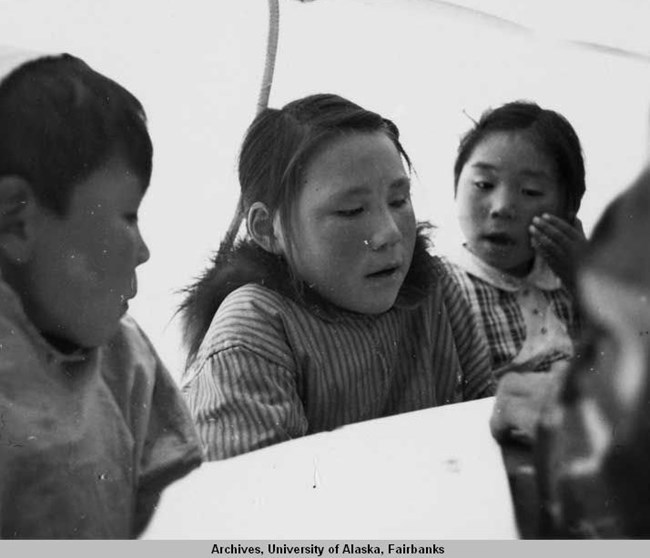
University of Alaska-Fairbanks Archives
“Caribou meat is our meat since I was born. I was raised with it. The skin was my clothes. The meat was my diet and the broth was my drink… Without caribou meat, what would I eat...?” – Rachel Riley, Nunamiut Elder
In this Northern Alaska park unit, the Nunamiut, Koyukon and Iñupiat people have been part of the ecosystem for over 13,000 years. Nomadic hunters and gatherers traveled between the mountains' forested southern slopes and the Arctic Coast. Caribou have been vitally important for the survival of all native people whose homelands are now partially encompassed by Gates of the Arctic National Park and Preserve — including the Nunamiut Inupiat village of Anaktuvuk Pass, Eskimo people of the Kobuk and Noatak Rivers, and Koyukon Indians.
Learn more about the continued importance of caribou for the Nunamiut Eskimos.
Learn about Simon Paneak, a hunter and trapper in the central Brooks Range, and about the museum located in the village of Anaktuvuk Pass that is dedicated to the Nunamiut people.
Listen to elder interviews through University of Alaska Fairbanks's Project Jukebox including Catherine Attla, Koyukon Athabascan elder from Huslia, Alaska. Catherine grew up learning subsistence skills and cultural knowledge from her grandparents and she talks about the importance of passing along this knowledge – she wrote a book of Athabascan stories “As My Grandfather Told It.”
Visit the park website at: Gates Of The Arctic National Park & Preserve (U.S. National Park Service) (nps.gov)
Last updated: January 17, 2024
